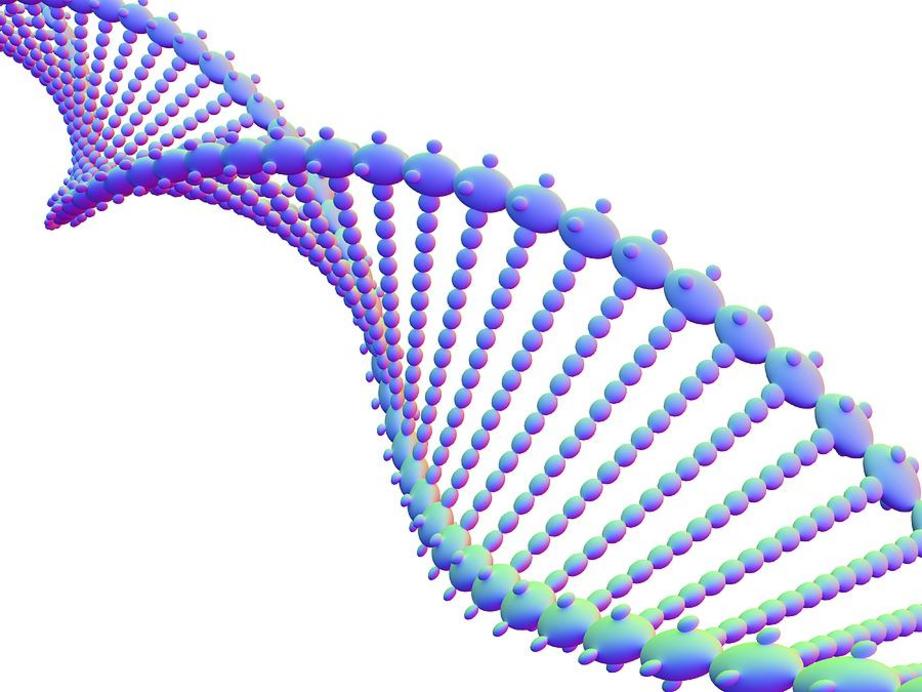Organisms created with synthetic DNA pave way for entirely new life forms
E coli microbes have been modified to carry an expanded genetic code which researchers say will ultimately allow them to be programmed
From the moment life gained a foothold on Earth its story has been written in a DNA code of four letters. With G, T, C and A - the molecules that pair up in the DNA helix - the lines between humans and all life on Earth are spelled out.
Now, the first living organisms to thrive with an expanded genetic code have been made by researchers in work that paves the way for the creation and exploitation of entirely new life forms.
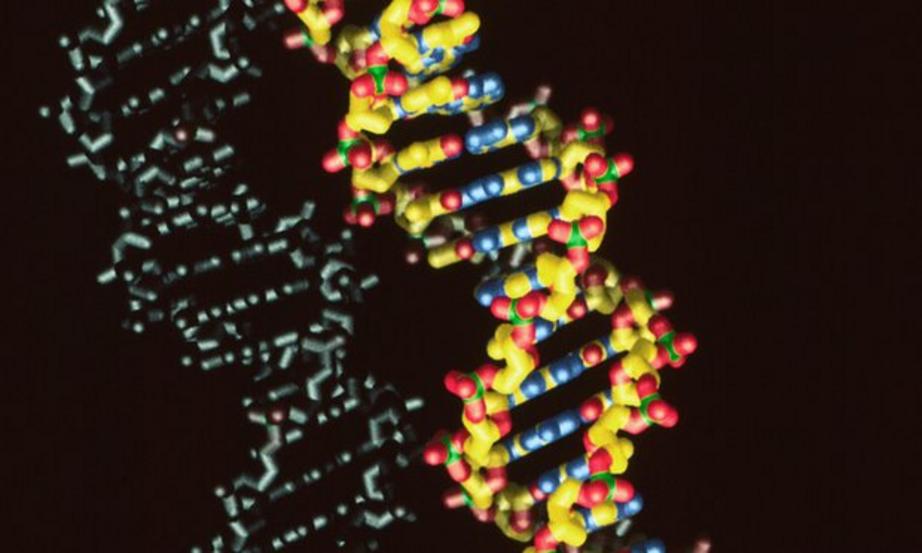
A standard DNA molecule. Floyd Romesberg and his team have expanded the genetic code from four letters to six by adding two new molecules they call X and Y. Photograph: Deco Images II / Alamy/Alamy
First life forms to pass on artificial DNA engineered by US scientists
Scientists in the US modified common E coli microbes to carry a beefed-up payload of genetic material which, they say, will ultimately allow them to program how the organisms operate and behave.
The work is aimed at making bugs that churn out new kinds of proteins which can be harvested and turned into drugs to treat a range of diseases. But the same technology could also lead to new kinds of materials, the researchers say.
In a report published on Monday, the scientists describe the modified microbes as a starting point for efforts to “create organisms with wholly unnatural attributes and traits not found elsewhere in nature.” The cells constitute a “stable form of semi-synthetic life” and “lay the foundation for achieving the central goal of synthetic biology: the creation of new life forms and functions,” they add.
How the new microbe was created
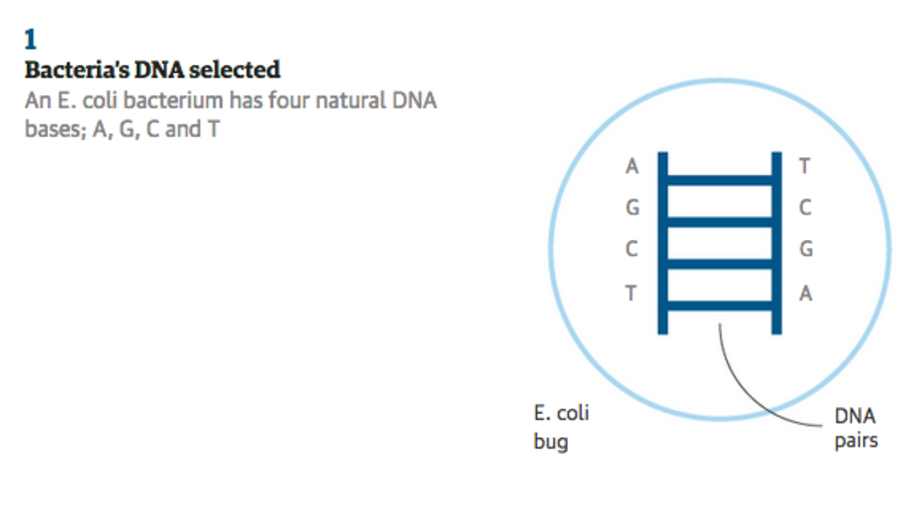
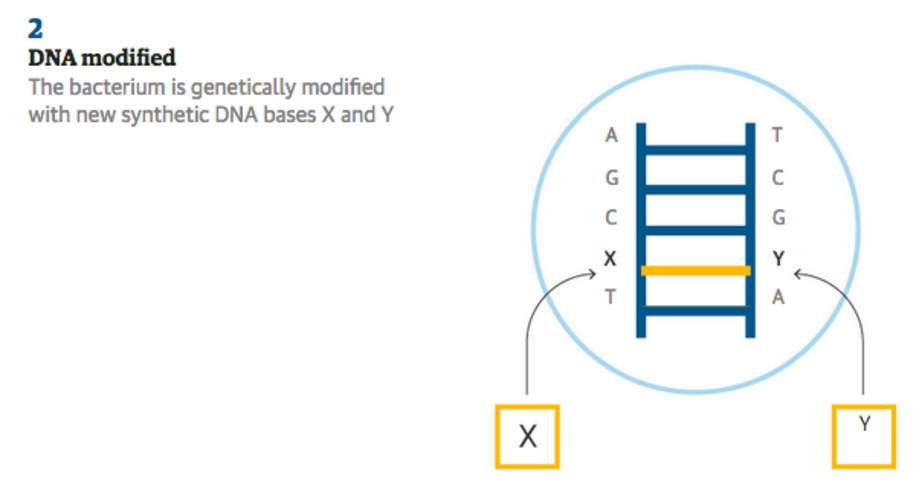
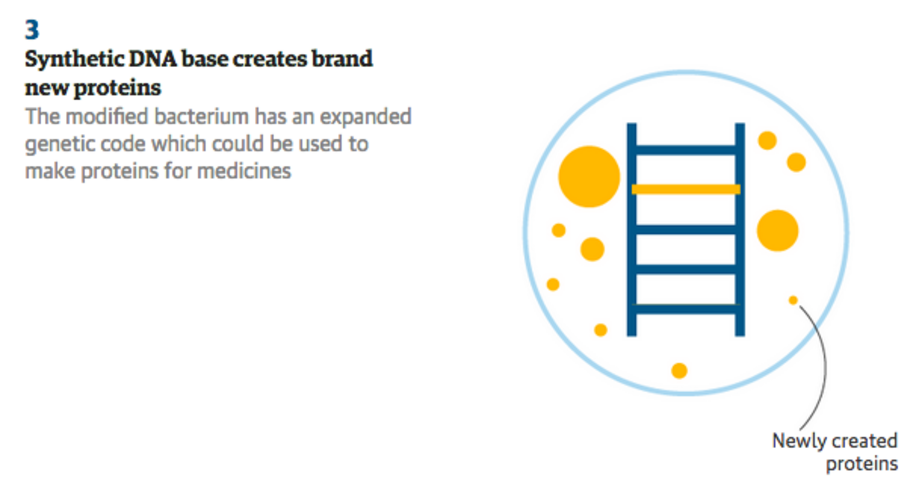
Floyd Romesberg and his team at the Scripps Research Institute in California expanded the genetic code from four letters to six by adding two new molecules they call X and Y and adding them to the bugs’ genetic makeup. The microbes are modified to absorb the new genetic material which the scientists make separately and then feed to the cells.
The need to supply the bugs with the X and Y molecules is meant to ensure that the cells will die should they somehow get out of the lab. But Romesberg said that despite the protective measure, he still gets asked if he has seen Jurassic Park. In the 1993 movie, Jeff Goldblum questions whether the park’s dinosaurs might breed in the wild despite the failsafes built into their genetic makeup. “What the movie depicted is very different to our failsafe,” Romesberg said. “Our failsafe is based on the availability of X and Y and the cell could never make them.”
“In addition, evolution works by starting with something close and then changing what it can do in small steps. Our X and Y are unlike natural DNA, so nature has nothing close to start with. We have shown many times that when you do not provide X and Y, the cells die, every time,” he added.
It is not the first time Romesberg has made microbes with an expanded genetic alphabet. In 2014, he announced the first such organisms, but these were sickly and soon died out. He compares the situation to having proved he could generate electricity, but not put it to good use. “We demonstrated that you could throw the switch and the light would go on, but then it would quickly go out,” he said.
Over the past two years, his team worked out how to make the microbes hardier and pass on their synthetic genetic bases more faithfully when they divided. If the X and Y are not passed on, the bugs’ DNA quickly reverts to the standard four letter genetic code, he said.
It took three crucial fixes for the microbes to survive and reliably pass on their new genetic material. In one key improvement, Romesberg modified the microbe’s immune system so that it destroyed any DNA that was missing the synthetic X and Y bases. The end result, he says, is that the bugs can hold the new genetic material indefinitely. “Now you throw the switch and the light stays on,” he told the Guardian.
The Guardian's Science Weekly Science Weekly podcast: DNA gains two new letters
Prof Jason Chin explains last week's breakthrough in synthetic biology. Plus, Dr Claire Jones and Prof Tilli Tansey discuss the forgotten women of science, and Dr Elizabeth Blackburn describes the discovery that led to her winning a Nobel prize
For now, the synthetic bases do nothing other than survive in the microbes. The next stage of the research is to have the microbes read the extra genetic material, and in the first instance, make new kinds of proteins that are not found in nature. “This will blow open what we can do with proteins,” Romesberg said. Details of the work are published in the journal Proceedings of the National Academy of Sciences.
“This is a major step forward in showing that a living cell such as a simple bacterium can be engineered to sustain a synthetic base pair not found in nature,” said Paul Freemont, who specialises in synthetic biology at Imperial College in London. “This leads to the concept of semi-synthetic living systems that could be engineered to perform specific functions that would rely on a distinct genetic code compared to the natural genetic code.”
But he said that the “real power” of the approach would be in making microbes that carried multiple artificial DNA bases, or even a completely human-designed synthetic genome, which the study suggested was at least possible in principle.
Romesberg said it was important for science to be explained to help “eliminate the fear of the unknown”, adding: “the benefits need to be weighed against the potential costs, and in this case the benefits include new and better drugs.”

